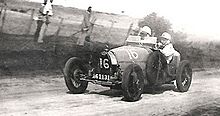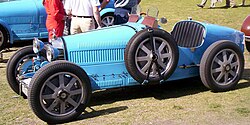
Automobiles Ettore Bugatti was a German then French manufacturer of high-performance automobiles. The company was founded in 1909 in the then-German city of Molsheim, Alsace, by the Italian-born industrial designer Ettore Bugatti. The cars were known for their design beauty and numerous race victories. Famous Bugatti automobiles include the Type 35 Grand Prix cars, the Type 41 "Royale", the Type 57 "Atlantic" and the Type 55 sports car.
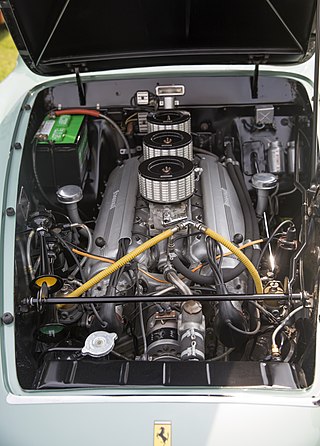
The Ferrari Lampredi engine was a naturally aspirated all aluminum 60° V12 engine produced between 1950 and 1959. Inline-4 and Inline-6 variants for racing were derived from it.

The early Bugatti 8-cylinder line began with the 1922 Type 30. The same basic design was used for the 1926 Type 38 as well as the Type 40, Type 43, Type 44, and Type 49.

The Bugatti Type 57 and later variants was a grand tourer built from 1934 through 1940. It was an entirely new design created by Jean Bugatti, son of founder Ettore. A total of 710 Type 57s were produced.

The Bugatti Type 13 was the first true Bugatti car. Production of the Type 13, and later Types 15, 17, 22, and 23, began with the company's founding in 1910 and lasted through 1920, with 435 examples produced. Most road cars used an eight-valve engine, though five Type 13 racers had 16-valve heads, some of the first ever produced. The road cars became known as pur-sang ("thoroughbred") in keeping with Ettore Bugatti's feelings for his designs.

The Bugatti Type 51 series succeeded the famous Type 35 as Bugatti's premier racing car for the 1930s. The main distinction is that it uses a twin cam engine. Unlike the dominant Type 35s of the prior decade, the Type 51 were unable to compete with the government-supported German and Italian offerings.
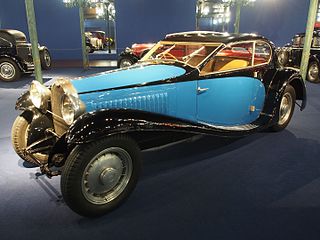
The Bugatti Type 46 and later Type 50 were large enclosed touring cars and along with the Type 50B racing version, were all produced in the 1930s. Their relative ubiquity and numbers, combined with their styling caused them to sometimes receive the appellation of being a Molsheim Buick.

The Bugatti Type 32, commonly called the Tank de Tours, was a streamlined racing car built in 1923. It was built to compete in the French Grand Prix, which was held on July 2 in Tours on the same year.
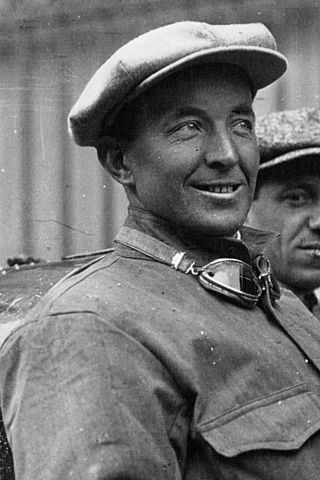
Pietro Bordino was an Italian racing driver. One of Italy's top racing drivers of the 1920s, Bordino won the 1922 Italian Grand Prix. One of the few European drivers of the period to compete on the regular American Indy car circuit, composed largely of board ovals, he won twice during the 1922 U.S. racing season.
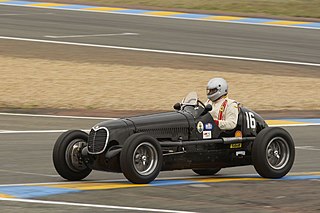
The Maserati 6CM is an Italian single-seater racing car, made by Maserati of Modena from 1936 to 1940 for the Voiturette racing class. Twenty-seven were built on the Maserati 4CM frame, with front suspension as on the Maserati V8RI, and had a successful racing career from 1936 to 1939. The 6CM was introduced to the world at the 1936 Milan Motor Show. Maserati spent much of its early years manufacturing cars for privateers in the racing field. The Maserati 6CM is no exception.

The 1927 Grand Prix season was the third AIACR World Manufacturers' Championship season and the second run to a 1.5-litre engine limit. In a dominant display, the championship was won by Delage, with team driver Robert Benoist winning four of the five Grand Prix.
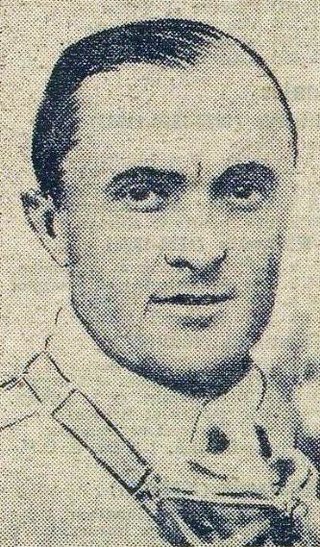
The 1928 Grand Prix season saw the Monegasque driver Louis Chiron, and his Bugatti, take seven Grand Prix victories.

The 1922 Grand Prix season had several notable events during the year. The AIACR governing body brought in a 2-litre formula for Grand Prix. French companies brought out straight-8 engines for their cars but it was FIAT's 6-cylinder engine that took the trophies. Veteran Felice Nazzaro won the French Grand Prix, held near Strasbourg. It was a tainted victory though, as Nazzaro's nephew was killed when his FIAT's suspension broke in the latter stages of the race. An almost identical accident also happened to team-mate Pietro Bordino, though he was only slightly injured. Pierre de Vizcaya's Bugatti finished second, nearly an hour behind.

The 1923 Grand Prix season was part of a watershed year for motor racing that saw significant advances in motor-racing engineering, design and events. Fiat's chief designer, Guido Fornaca, developed the 805, the first supercharged car to win a Grand Prix. Benz appeared with the first mid-engined racer and, along with Bugatti and Voisin, produced some of the first efforts at aerodynamics on racing cars. With the United States also adopting the 2-litre formula, Harry Miller could use the smaller engine size to design the first single-seater race-car, ideally suited to American oval racing.

The 1924 Grand Prix season saw Grand Prix motor racing spread further across Europe and North America. In Italy a number of new open-road events were held. In France two new circuits were opened – at Montlhéry near Paris and Miramas near Marseille.
The 1930 Grand Prix season continued the malaise that had taken over the sport. Although there was little technical advance more privateer teams were forming, getting some factory support. The AIACR continued to mandate its fuel-regulated Formula Libre rules. Across the Atlantic, the AAA abandoned the AIACR regulations. Their new regulations were derisively called the “Junk Formula” by purists, opening up to their own version of Formula Libre: with modified stock-standard cars of up to 366 cu in (6-litres) with two seats.

The Bugatti Chiron is a mid-engine two-seater sports car designed and developed in Germany by Bugatti Engineering GmbH and manufactured in Molsheim, France, by French automobile manufacturer Bugatti Automobiles S.A.S. The successor to the Bugatti Veyron, the Chiron was first shown at the Geneva Motor Show on 1 March 2016. The car's design was initially previewed with the Bugatti Vision Gran Turismo concept car unveiled at the 2015 Frankfurt Auto Show.

The Ferrari 275 S was a sports racing car produced by Ferrari in 1950. It was the first Ferrari powered by a new Aurelio Lampredi-designed V12 engine, created as a large displacement alternative to the initial 1,5 L Colombo V12, used in supercharged form in Ferrari 125 F1. Formula One regulations allowed for up to 4.5 L in naturally aspirated form.

Bugatti made a series of Grand Prix, and later Formula One, straight-8 racing engines; between 1922 and 1939, and once again in 1956.


